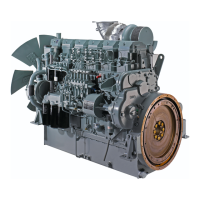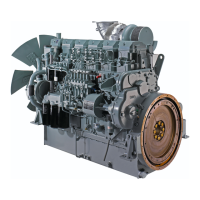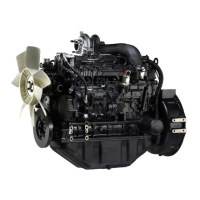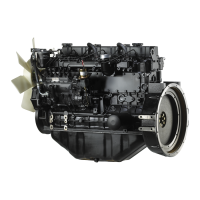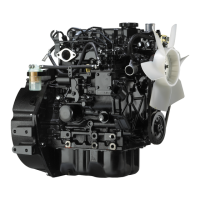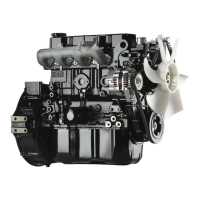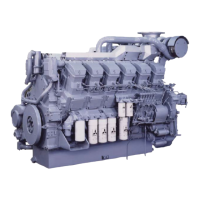8-2
Chapter 8 PERIODIC INSPECTION AND MAINTENANCE PROCEDURES
V-belt and belt tension - Inspect and Adjust
V-belt - Inspect
1. Inspect the V-belt visually for separation or damage. If any abnormality is found, replace the belt with a new one.
2. Inspect belt tension (deflection).
Push the belt downward at the midway between pulleys. If the deflection is 10 to 15 mm [0.39 to 0.59 in.], the
tension is correct.
V-belt pushing force: Approx. 98 to 147 N {10 to 15 kgf} [22 to 32.4 lbf]
If the deflection of belt is not within the standard, adjust the belt tension.
V-belt tension (Alternator side) - Adjust
1. Remove the belt cover.
2. Loosen all retaining bolts of the alternator and ad-
justing plate.
3. Operate the alternator to adjust the V-belt tension.
4. Tighten all retaining bolts of the alternator and ad-
justing plate.
5. Reinstall the belt cover.
Fig. 8-1 V-belt and belt tension - Inspect and Adjust
V-belt tension (Water pump side) - Adjust
1. Loosen the retaining nut of tension pulley.
2. Turn the adjusting bolt to adjust the belt tension.
3. After adjusting, tighten the nut to be retained the tension pulley.
If defects such as cuts or surface separations are found during inspection, replace the belt.
Keep oil and grease away from the belt, since they may cause the belt to slip and shorten the service life.
Excessive belt tension can cause rapid wear of the alternator bearing and shorten the service life of the belt.
Adjust the belt tension accurately by following the procedures below.
Adjusting bolt
Adjusting plate
Fan pulley
Tension pulley
Water pump pulley
Alternator
pulley

